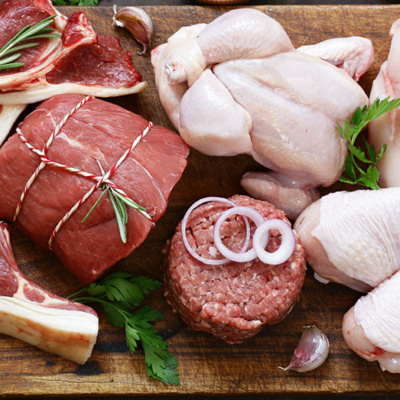top of mind news
- States, Cities Ease Restaurant Restrictions
- Are You at Risk of Losing Your VIP Customers?
- The Restaurant of the Future 6.0: Differentiation for a Brighter 2021
- Staying In Is Here to Stay. What Does that Mean for Restaurant Loyalty Programs?
- Is Your Restaurant Brand Prepared for Private Equity?
Poultry
 Total chicken slaughter for the week ending January 16th was down 3.2% from year ago levels, but bird weights remain elevated. The six-week total of ready-to-cook broiler production was off a more modest 2.2% (y/y). Sales activity across the chicken parts is reportedly moderate to active, and it appears that market participants are seeing the results of smaller production. Wing prices continued their historic run throughout last week, but breast meat and tenders joined the upward move, as well. Even the leg quarter complex was finding support, with reports of tighter wholesale inventories occurring from additional export interest. While anticipating chicken production to increase as prices rise, feed costs however remain a concern for producers.
Total chicken slaughter for the week ending January 16th was down 3.2% from year ago levels, but bird weights remain elevated. The six-week total of ready-to-cook broiler production was off a more modest 2.2% (y/y). Sales activity across the chicken parts is reportedly moderate to active, and it appears that market participants are seeing the results of smaller production. Wing prices continued their historic run throughout last week, but breast meat and tenders joined the upward move, as well. Even the leg quarter complex was finding support, with reports of tighter wholesale inventories occurring from additional export interest. While anticipating chicken production to increase as prices rise, feed costs however remain a concern for producers.
Beef
An active Saturday cattle slaughter (again) continues to underpin larger weekly harvests, with last week’s cattle throughput up 2% from last year while beef production was up 3.6%. Spot beef demand remains robust, with the Choice cutout moving up near the $2.20 area last week. Spot sales are active amid higher pricing with the middle meats causing much of last week’s increases. Beef 50’s prices as well, pushed higher throughout last week, but renewed weakness emerged on Friday. A modest price pull back is likely for 50’s into February, but packers have an aggressive forward sold position which may temper that downside risk.
Pork
Hog slaughter last week was more active than initially expected, and left pork output up 4.3% from the week prior and 2.9% over last year. Amid larger production schedules, the wholesale pork market was mostly lower, with the ham primal leading the week’s lower pricing. While the weekly price average for bellies was lower (w/w), Friday’s daily close pushed back above $1.30, but volume was light on the day. But the near-term upside potential for belly prices is expected to be limited. Exports remain a key risk to higher overall pork prices into spring.
THE SEA
Seafood
The salmon markets have mostly tracked below year ago levels for the last several months. Lethargic foodservice demand has been a major contributor to such. With restaurants around the world facing restrictions due to COVID, salmon demand is anticipated to remain erratic for the next several months. This could temper any upside potential for the salmon markets deep into the spring.
THE GARDEN
Produce
The tomato markets continue to move lower. Supplies from Mexico have improved which is pushing prices downward. Relatively cool weather this winter has slowed the Florida harvest. However, warmer weather is anticipated this week. The tomato markets could have more downside risk in the near term. The lettuce markets are fairly steady. Iceberg lettuce shipments have been tracking near 10% above year ago levels as of late and history suggests that fairly attractive iceberg lettuce prices could persist into early February.
THE KITCHEN SINK
Dairy
The CME cheese block and barrel markets were notably lower last week. Spot milk buys last week were occurring at historically discounted price levels to class III government grade. This is equaling much available milk supplies for cheese producers and is lowering costs. Cheese prices may experience further weakness in the near term. The CME spot butter market finished firm last week. Abundant cream supplies are supporting domestic butter output and inventories are big. These factors could temper further price gains but keep in mind that the butter market is historically low and bringing in value buyers.
Grains
A notable portion of the South American crops have received important rains over the last week or so which is fueling optimism that they will finish well. This could weigh on the grain markets in the near term. However, world supplies of both corn and soybeans are anticipated to remain tight which should bring support eventually.
Oil
Last week nearby WTI crude oil futures were down modestly (w/w) but are still the highest in 11 months. A softening greenback and less friendly U.S. Administration to drilling and petroleum products will likely keep crude oil prices firm.













